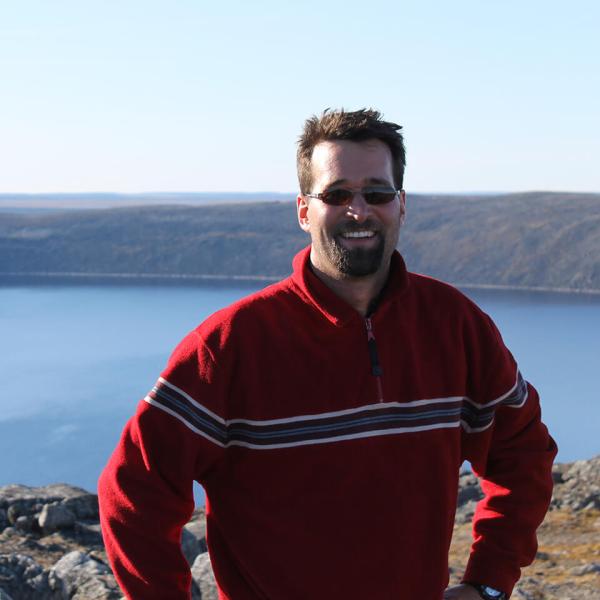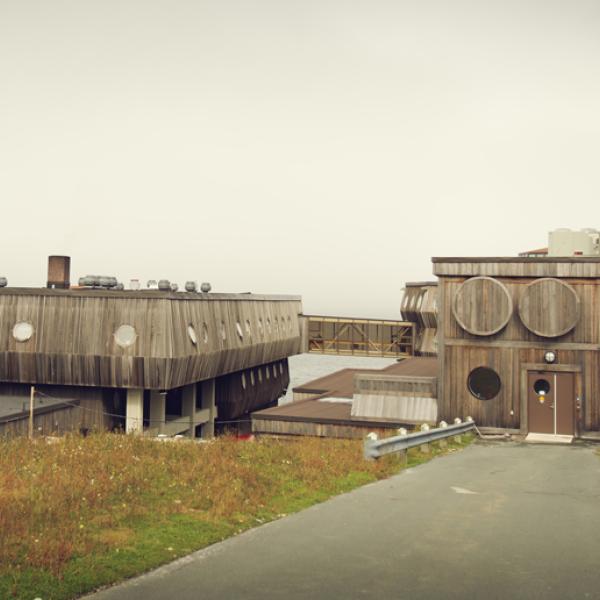Through its John R. Evans Leaders Fund, the CFI provides state-of-the-art research infrastructure to Canada Research Chairholders to bring the world's most accomplished and promising minds to Canada, and keep them here. Here are three examples of their visionary work.
Understanding the riches of the deep
The oceans cover 70 percent of the planet, yet less than five percent of the seabed has been explored. This year, assistant professor John Jamieson, the newly appointed director of the Marine Geology Research Laboratory at Memorial University of Newfoundland, will broaden humankind’s knowledge of the mysterious deep, undertaking three research cruises in the Atlantic and southwest Pacific Oceans.
Jamieson will focus on detecting and understanding the formation of both actively forming and extinct sea floor massive sulfide (SMS) deposits. He is one of only 10 economic geologists in the world specializing in this environment. SMS deposits are found at so-called “black smokers,” which are vents that discharge high-temperature fluids rich in minerals bearing elements like gold, copper and zinc — finds of potential economic interest to governments and mining companies.
Jamieson, who was previously at GEOMAR, the Helmholtz Centre for Ocean Research in Kiel, Germany, is a Tier II Canada Research Chair in Marine Geology. Recipient of a John R. Evans Leaders Fund grant, Jamieson is planning to use the money to upgrade two gamma spectrometers for dating mineral samples collected from the seabed. He is also purchasing special microscopes for mineral analysis and a powerful computer for mapping and data processing the topography of the sea floor.
Outsmarting the wiliest virus
HIV is the most genetically diverse virus in the human population — the world’s 35 million HIV carriers are all infected with a different, unique strain of this virus. This remarkable adaptation is a key reason why a vaccine has eluded researchers for the past 30 years, says Eric Arts, Canada Research Chair in HIV Pathogenesis and Viral Control at Western University’s Schulich School of Medicine & Dentistry in London, Ont.
A world leader in HIV/AIDS research, Arts is part of a global consortium working on vaccine development. His Western U laboratory is the only team in North America involved with the EAVI20202 grant, a €23 million initiative accelerating the search for an effective vaccine. The research will build upon that of Western U colleague Cil-Yong Kang, whose new vaccine stimulates key elements of protection while proving safe for HIV-infected patients.
To thwart HIV’s remarkable adaptability, however, Arts is focused on creating a vaccine built upon thousands of different HIV strains from around the world. “It teaches the immune system to recognize important bits of the virus,” he says.
As a John R. Evans Leaders Fund recipient, the grant allows Arts to continue collaborations this year with EAVI20202. It will also help him integrate into HIV clinical studies across Canada and develop clinical tests to provide enhanced services to HIV and hepatitis C patients.
Changing the quantum game with silicon
Silicon is the second most common element in the earth’s crust, found in things like sand and rocks that contain quartz. It underpins the entire computer industry; nearly all computer chips are made from silicon. It is also being used to create a quantum computer — the holy grail of next-generation computation.
Stephanie Simmons, Simon Fraser University’s new Department of Physics assistant professor, is a leader in the global race to create a quantum computer, which encodes data, called quantum bits or “qubits,” in multiple states simultaneously. This would vastly outstrip the capabilities of conventional computers, which only encode data as binary bits, meaning zeros or ones. But building a quantum computer is difficult, as they are extremely sensitive to interaction with the surroundings.
A former physics research fellow at Oxford University, Simmons has shown that single-crystal silicon is an ultra-stable host for qubits. Her challenge is finding a way to connect multiple qubits within silicon. The ultimate goal is to make millions of qubits work in tandem. “Because the semiconductor industry already prints billions of near-perfect, nano-sized objects, designing a silicon-based quantum computation solution will be a complete game-changer,” Simmons says. “We could use that existing industry to print quantum circuit boards.”
The John R. Evans Leaders Fund grant that Simmons has received will allow her to obtain equipment to test a promising qubit-linking strategy by using ultra-low temperatures, lasers and microwaves. Says Simmons, “Silicon stands a good chance of revolutionizing the information age once more.”





